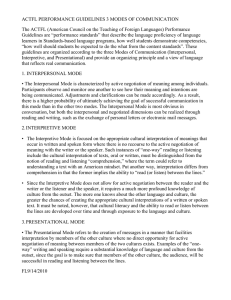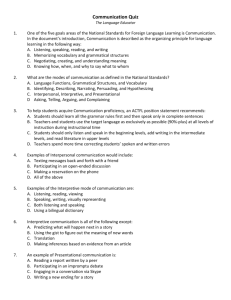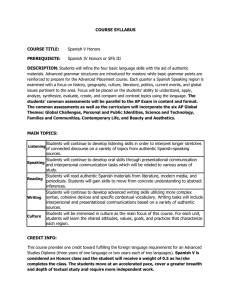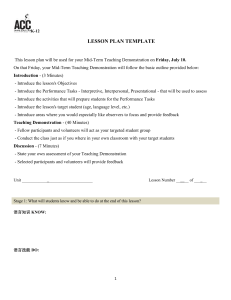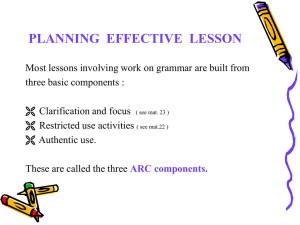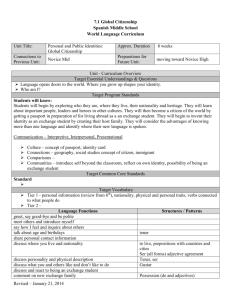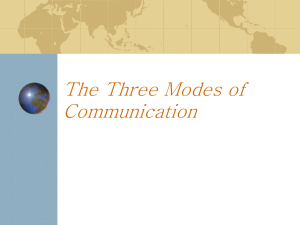Three Modes of Communication: Interpersonal, Interpretive, Presentational
advertisement
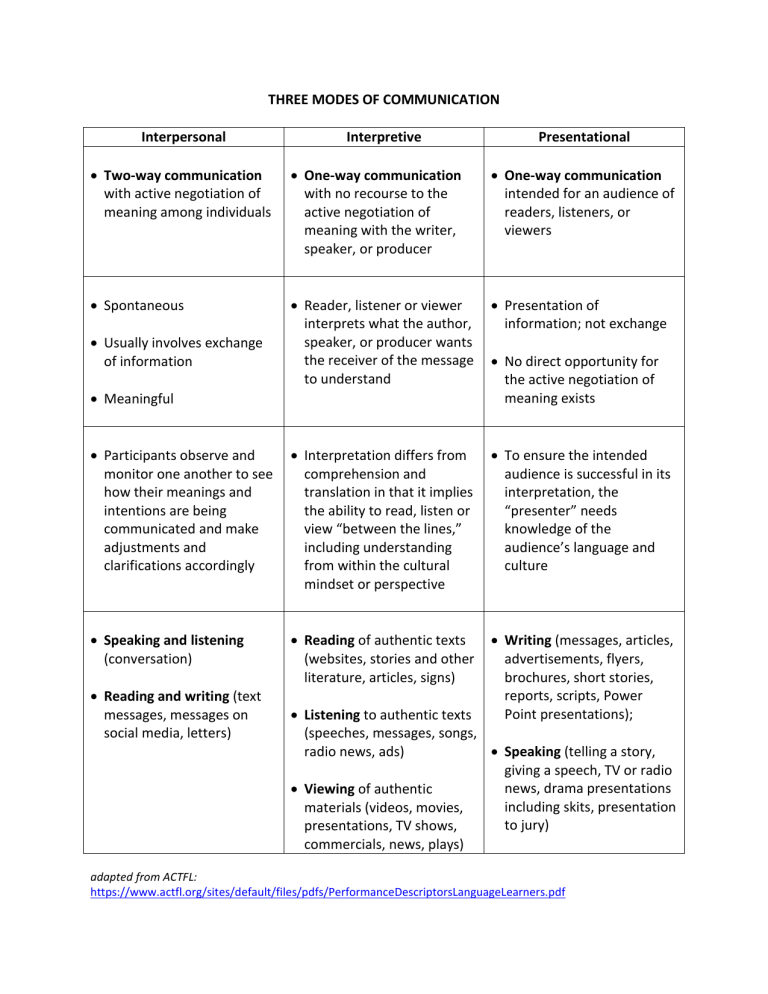
THREE MODES OF COMMUNICATION Interpersonal Interpretive Presentational Two-way communication with active negotiation of meaning among individuals One-way communication with no recourse to the active negotiation of meaning with the writer, speaker, or producer One-way communication intended for an audience of readers, listeners, or viewers Spontaneous Reader, listener or viewer interprets what the author, speaker, or producer wants the receiver of the message to understand Presentation of information; not exchange Participants observe and monitor one another to see how their meanings and intentions are being communicated and make adjustments and clarifications accordingly Interpretation differs from comprehension and translation in that it implies the ability to read, listen or view “between the lines,” including understanding from within the cultural mindset or perspective To ensure the intended audience is successful in its interpretation, the “presenter” needs knowledge of the audience’s language and culture Speaking and listening (conversation) Reading of authentic texts (websites, stories and other literature, articles, signs) Writing (messages, articles, advertisements, flyers, brochures, short stories, reports, scripts, Power Point presentations); Usually involves exchange of information Meaningful Reading and writing (text messages, messages on social media, letters) No direct opportunity for the active negotiation of meaning exists Listening to authentic texts (speeches, messages, songs, Speaking (telling a story, radio news, ads) giving a speech, TV or radio news, drama presentations Viewing of authentic including skits, presentation materials (videos, movies, to jury) presentations, TV shows, commercials, news, plays) adapted from ACTFL: https://www.actfl.org/sites/default/files/pdfs/PerformanceDescriptorsLanguageLearners.pdf Objectives of a communicative approach: to provide activities that require students to go beyond their traditional role as responder to the teacher’s questions; to provide opportunities for students to use the language in meaningful interaction with others, and to negotiate meaning in authentic contexts in interpersonal communication; to provide opportunities for students to engage in self-expression in interpersonal and presentational communication; to provide opportunities for students to hear and read a great deal of comprehensible and authentic language in interpersonal and interpretive communication; to provide opportunities for students to engage in real-life tasks to provide a nonthreatening environment in which students’ affective filter is lowered adapted from: Shrum, Judith L., and Eileen W. Glisan. Teacher's Handbook: Contextualized Language Instruction. 4th ed. Boston: Heinle and Heinle, 2010.
